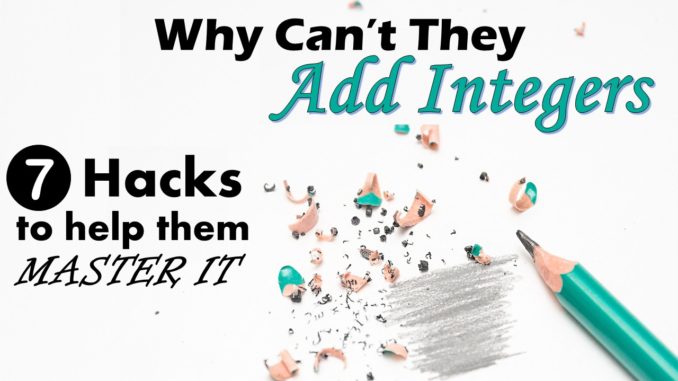
7 Teaching Hacks to Help them Master it!
You have most likely felt the frustration of trying to help a middle school or high school student perform a grade level skill, only to realize he cannot do some of the most simple tasks necessary to do the work.
I was shocked the first time I taught Geometry, and so many students could not add integers – a skill that they were supposed to learn several years prior. Despite days of reteaching it, and giving lots of practice, these students still struggled at this foundational skill.
For years of teaching, I encountered this issue with my students with little success. Then I discovered Seven Effective Teaching Strategies that would help my students master this, and many other skills.
Why Adding Integers is SO Important
Adding Integers is one of the foundational skills your students will need to perform most skills starting in Middle School.
Most equations cannot be solved if the student cannot add integers.
In fact, the first skill students learn after adding integers is subtracting integers, which is done by converting the equation into an adding integers problem.
Often teachers are overly frustrated with a group of students who are struggling with one of many skills like one step equations, the distance formula, or calculating slope, and they continue to reteach that skill without success.
Almost always, the students’ inability to perform the task at hand, stems from not being able to do one of the prerequisite skills needed. Often, that skill is adding integers.
Here’s 7 Tips to Help your Students Finally Master Adding Integers – and all other skills
1) Instead of Memorizing a Formula, Teach Number Sense
Students have a lot to memorize each day: science symbols, world history dates, comma rules, and the list goes on. It’s hard. And math is full of things to memorize, that a struggling student is bound to forget or be confused on.
Instead of forcing the student to memorize these rules, teach them number sense. Like why a positive and negative number cancel out, or model it on a number line. After they’ve got the number sense, the rules will seem easy, (like shortcuts.)
So before teaching adding integers, try to give some real world examples of how -1 and 1 combine to make zero. Then model it on a number line. Finally, show it as an equation, and then ask the class what they think the answer will be if it’s -2 + 1, or -1 + 2.
2) Give a ReTeach
I have often seen a teacher say, “guys, we are really struggling on this skill. So we’re going to practice it some more,” and then hand the students a worksheet. If they didn’t get it the first time you taught it, they certainly don’t understand it the following day (or week).
Before having students practice the skill again, reteach it. And try teaching it differently.
If you taught Adding Integers the first time with number lines, this time use counter chips.
3) Give Ample Practice
It takes someone between 15 and 30 repetitions, depending on whose study you read, to master a skill. And if you’re weak at that skill, like math, it takes MORE than that.
Yet, often, we as teachers model a problem several times, and then give the students 5 to 10 practice problems, expecting them to grasp it.
Even if they do all the practice problems correctly, if the student has not practiced the skill enough, that knowledge will be forgotten in a short period of time.
Give your students LOTS of practice.
4) Give immediate Feedback
How often have you seen a student do an entire worksheet, but do it all wrong? This is only reinforcing a bad habit.
When you’re learning a new skill, you need feedback to know that you are doing the problem correctly. This way, if you make a mistake, you can quickly identify it and learn from it.
This is easily accomplished through online programs like IXL.com or KhanAcademy.org
If you can’t get your students on the internet, I like to provide answer sheets with the independent work, and have the students check as they go.
5) Don’t Penalize their Failure
We all know that failure is part of the learning process. Some of the greatest learning happens when we learn from our mistakes. But too often, in math class, we penalize students for not getting the right answer.
When the student is learning the skill, allow them to make mistakes, and learn from them. This is why I love immediate feedback, so they can learn from their mistakes.
Doing this will also give your students the confidence and freedom to experiment, maybe learning a new way to solve a problem, or a new way NOT to solve a problem. All of which helps them grow their number sense and deepen their understanding of the concept.
6) Give them as Long as They Need
It dawned on me, after two days of reteaching my Geometry students how to add integers without success, that they were supposed to learn this years ago. Why did I think I was so great that I could teach them this skill in a few short lessons, when others had been doing this to them for years without success.
Some students take longer than others. And that doesn’t mean their dumb. We all have a skill that is harder for us to learn than it is for other people.
But in Math class, we often feel pressured to ‘move on,’ and end up leaving those struggling students behind, ensuring their failure.
If you allow your students all the time that they need to learn the skill, and they know that they are not being penalized for failure, their confidence will increase, as will their appreciation for you as their math teacher.
7) Celebrate their success
One of the greatest joys of teaching, is seeing a student finally ‘get it.’
And one of the greatest joys of learning, is when you get it, and you know you got it!
That is cause for a celebration! So turn the music up, put their name on the wall, and dance!
….No really, celebrate their success. Acknowledge them publically, in front of the whole class. And play music and clap, and then make it memorable by putting their name under a banner showing everyone who enters the room that he is smart, because he can add integers!
You may even want to take his picture under the banner and send it home to his parents.
Adding Integers Resource Pack
We have an Adding Integers Resource Pack that includes 3 ReTeach Worksheets, 3 Adding Integers Worksheets, 3 quizzes, an “I Can Add Integers” banner, and a few other goodies so that you can start the station immediately.
Want more resources on Adding and Subtracting Integers?
Follow this Pinterest Board:

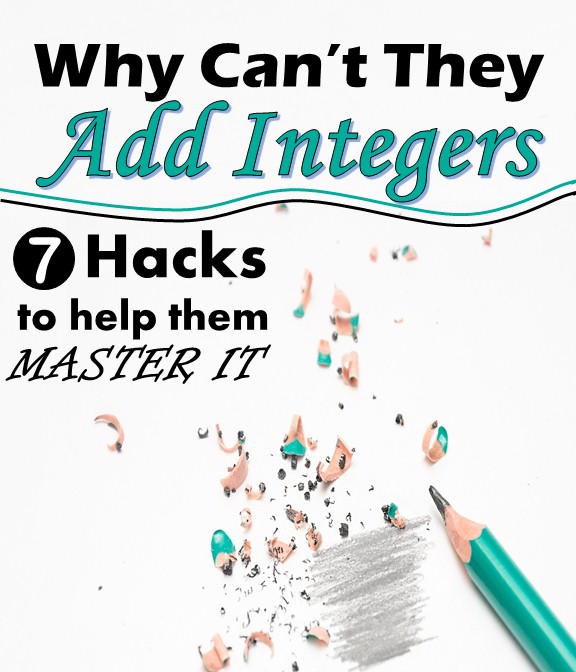
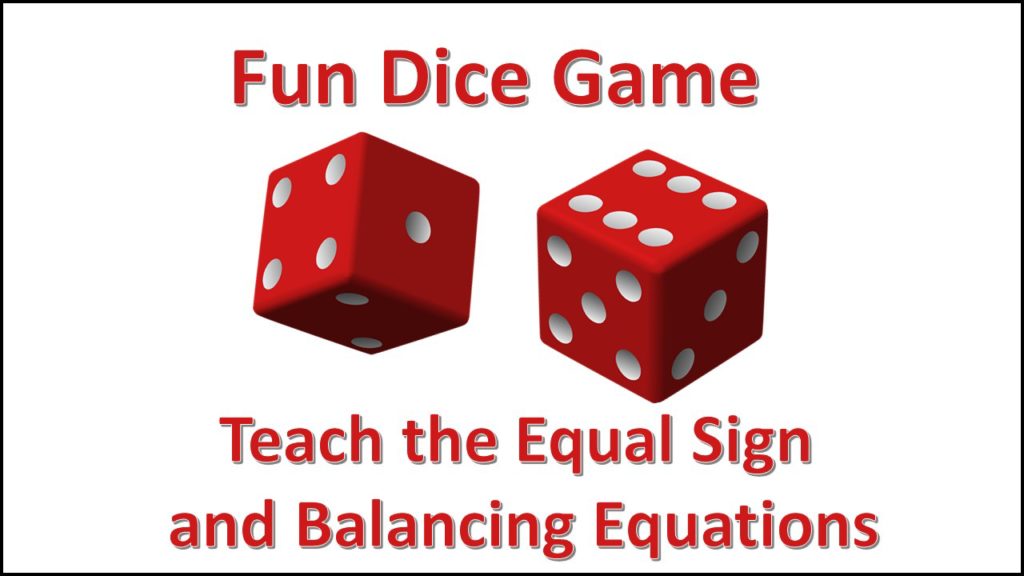
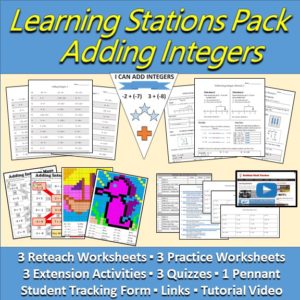
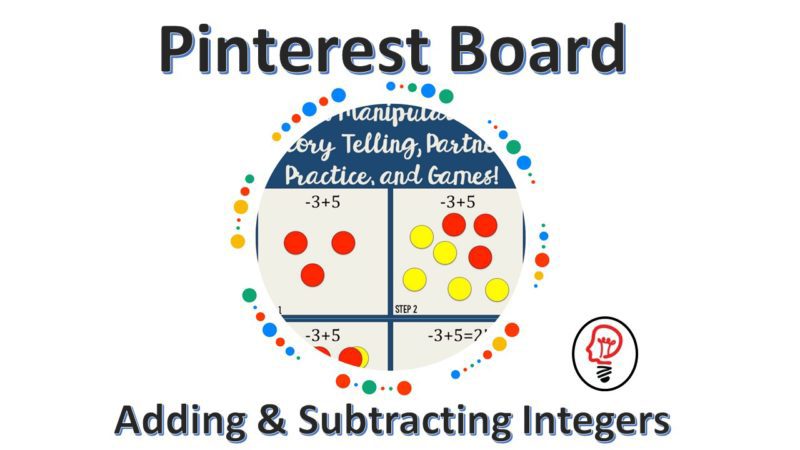
“Hacks?”
This is the clickbaitiest headline I’ve ever seen.
…AND I LOVE IT. 🙂
Thank you for making it about best practices in education!